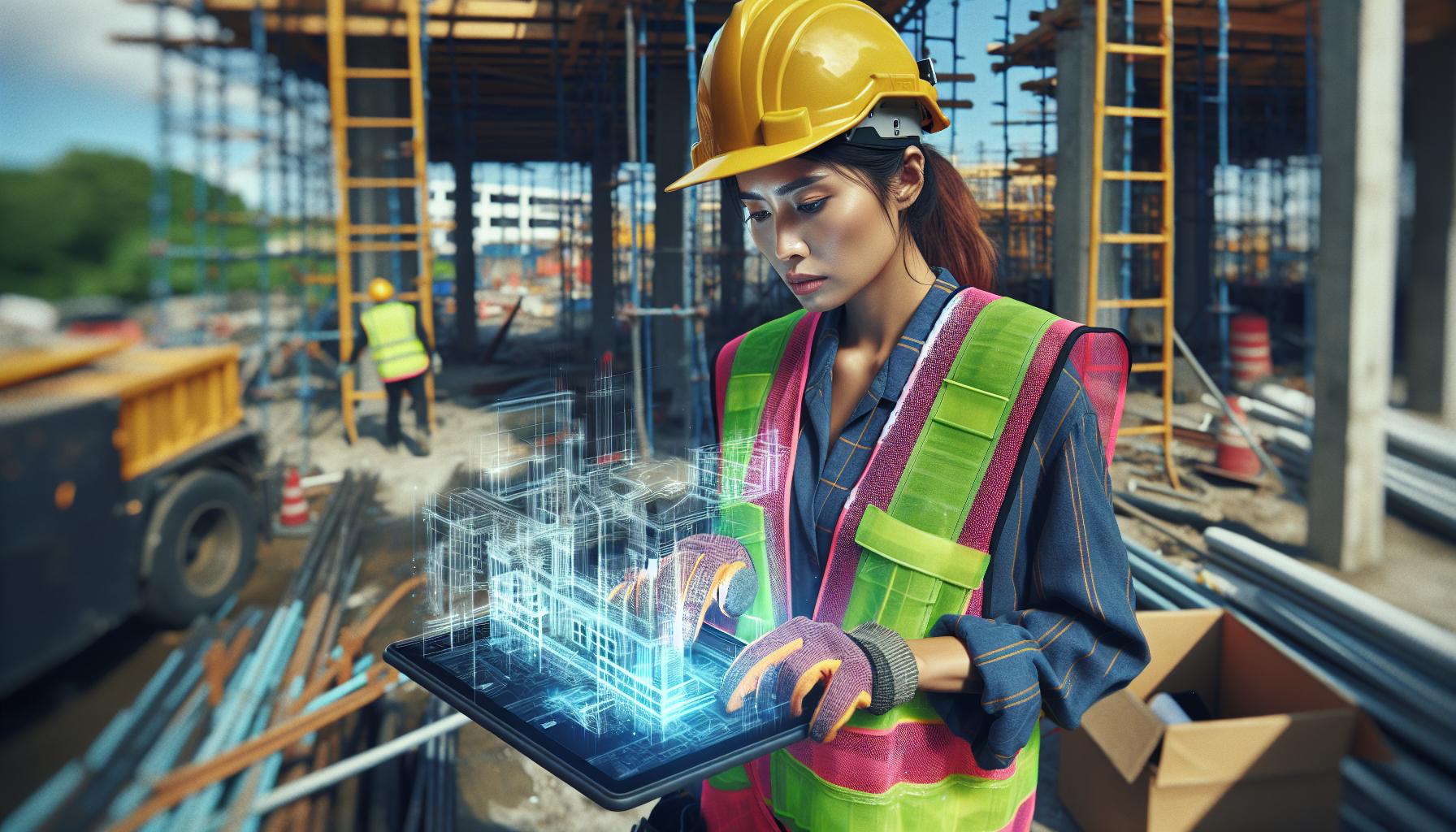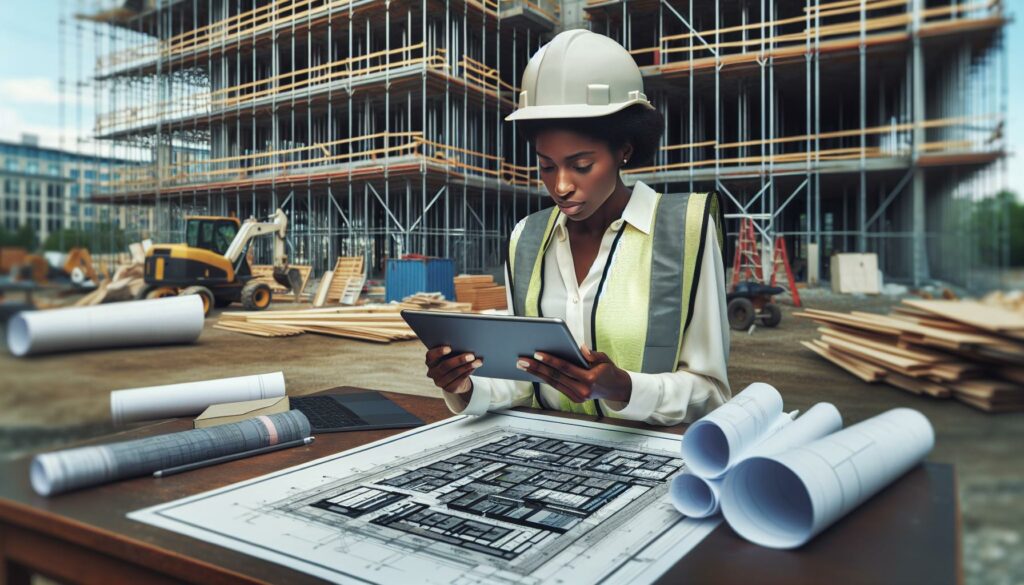In a world where hard hats and blueprints meet cutting-edge technology, construction augmented reality apps are revolutionizing the way projects come to life. Imagine walking onto a job site and seeing your plans literally leap off the page, transforming into 3D models right before your eyes. It’s like having a magic wand, but instead of casting spells, you’re building skyscrapers and homes with a sprinkle of tech wizardry.
Construction Augmented Reality Apps
Construction augmented reality apps revolutionize the way professionals interact with blueprints and models. These applications enable users to visualize 3D constructs directly on job sites, bridging the gap between design and actual implementation.
Incorporating AR technology enhances collaboration among architects, engineers, and contractors. It streamlines communication by providing a visual reference that all parties can access, minimizing misunderstandings and errors. Users can overlay digital images onto physical environments, allowing for real-time modifications based on site conditions.
The benefits of using construction augmented reality apps extend to efficiency and accuracy. Projects can progress faster as teams better understand designs and layout through immersive experiences. For instance, virtual walkthroughs can expose potential issues early, fostering timely adjustments before construction starts.
Market leaders such as Trimble, Autodesk, and DAQRI offer robust solutions in this domain. These platforms vary in functionality, catering to diverse project needs, from initial planning to project completion. The choice of app often depends on specific requirements, such as integration with existing software tools.
Numerous case studies illustrate the positive impact of these technologies. Companies report increased productivity, cost savings, and improved quality of work. According to surveys, construction professionals acknowledge augmented reality’s role in providing a competitive advantage in the market.
Advancements in hardware and software continue to enhance the capabilities of these applications. As mobile devices become more powerful, the accessibility and usability of AR apps improve drastically. This evolution positions construction augmented reality apps as essential tools for modern construction projects.
Key Features Of Construction Augmented Reality Apps

Construction augmented reality apps possess several essential features that enhance project efficiency and collaboration. These applications streamline workflows, making them vital tools in the construction industry.
User Interface Design
User interface design plays a pivotal role in AR applications. Intuitive layouts simplify navigation, enabling users to access key functionalities with ease. Clear icons and organized menus ensure that professionals can quickly find needed tools, reducing time spent on digital navigation. Visual cues improve understanding of complex models, allowing for seamless interactions between users and the augmented content. Offering customization options can also enhance user experience, catering to different user preferences and workflows.
Integration With Other Tools
Integration with other tools significantly enhances the functionality of construction AR apps. Compatibility with project management software fosters real-time data sharing, improving collaboration among team members. Linking AR applications with Building Information Modeling (BIM) systems ensures that users access the most up-to-date project information. Additionally, synchronization with scheduling tools aids in tracking project timelines effectively. Such integrations allow for a unified approach, consolidating multiple resources and enhancing overall project management efficiency.
Benefits Of Using Construction Augmented Reality Apps

Construction augmented reality apps offer numerous advantages that streamline processes and improve outcomes. They transform the way construction professionals engage with their projects, making tools like AR essential in modern construction.
Improved Visualization
Construction augmented reality apps enable users to visualize structures in their actual environments. Users can see 3D models overlaid on job sites, providing an accurate representation of how the finished project will look. This clarity reduces confusion and ensures that all stakeholders have a shared understanding of designs. Immersive experiences allow teams to explore plans from different angles, fostering better decision-making. Rapid adjustments become possible when users identify potential design flaws early in the process. Enhanced visualization ultimately leads to improved project outcomes and diminished chances of costly errors.
Enhanced Collaboration
Collaboration sees a significant boost with construction augmented reality apps. These tools allow architects, engineers, and contractors to work more cohesively, bridging gaps in communication. Visual references eliminate misunderstandings, as teams can refer to the same digital overlays and models. Real-time modifications based on site conditions keep everyone aligned throughout the construction process. The ability to conduct virtual walkthroughs fosters immediate feedback and facilitates swift consensus among team members. Enhanced collaboration contributes to increased productivity and ensures that projects stay on track and within budget.
Challenges In Implementing Construction Augmented Reality Apps

Implementing construction augmented reality apps presents several challenges impacting adoption and effectiveness.
Technical Limitations
Technical limitations often hinder the functionality of augmented reality apps within construction. Current mobile devices may not support advanced AR features, leading to performance issues. Insufficient processing power can result in lagging visuals during crucial tasks. Network reliability also plays a role, with unstable connections disrupting real-time updates. Compatibility issues with existing software systems may impede seamless integration into workflows. Adapting AR technology to varied site conditions further complicates its implementation.
Cost Considerations
Cost considerations significantly influence the adoption of construction augmented reality apps. Initial investments typically encompass software licenses, hardware purchases, and training expenses. Many organizations face budget constraints, making these investments challenging. Ongoing maintenance costs can accumulate, especially without clear ROI metrics. Furthermore, companies may hesitate to allocate resources toward new technology without established case studies demonstrating significant savings. Careful budgeting for implementation and support ensures that businesses can leverage AR’s full potential in construction projects.
Reality Apps
The integration of construction augmented reality apps is reshaping the industry by enhancing visualization and collaboration. These tools empower teams to interact with designs in real-time, leading to improved decision-making and project efficiency. As technology continues to evolve, the capabilities of AR applications will only expand, providing even greater benefits to construction professionals.
While challenges like cost and technical limitations exist, the potential for increased productivity and reduced errors makes the investment worthwhile. Companies that embrace this technology position themselves for success in a competitive market. With ongoing advancements, construction AR apps are set to become indispensable in delivering high-quality projects on time and within budget.

